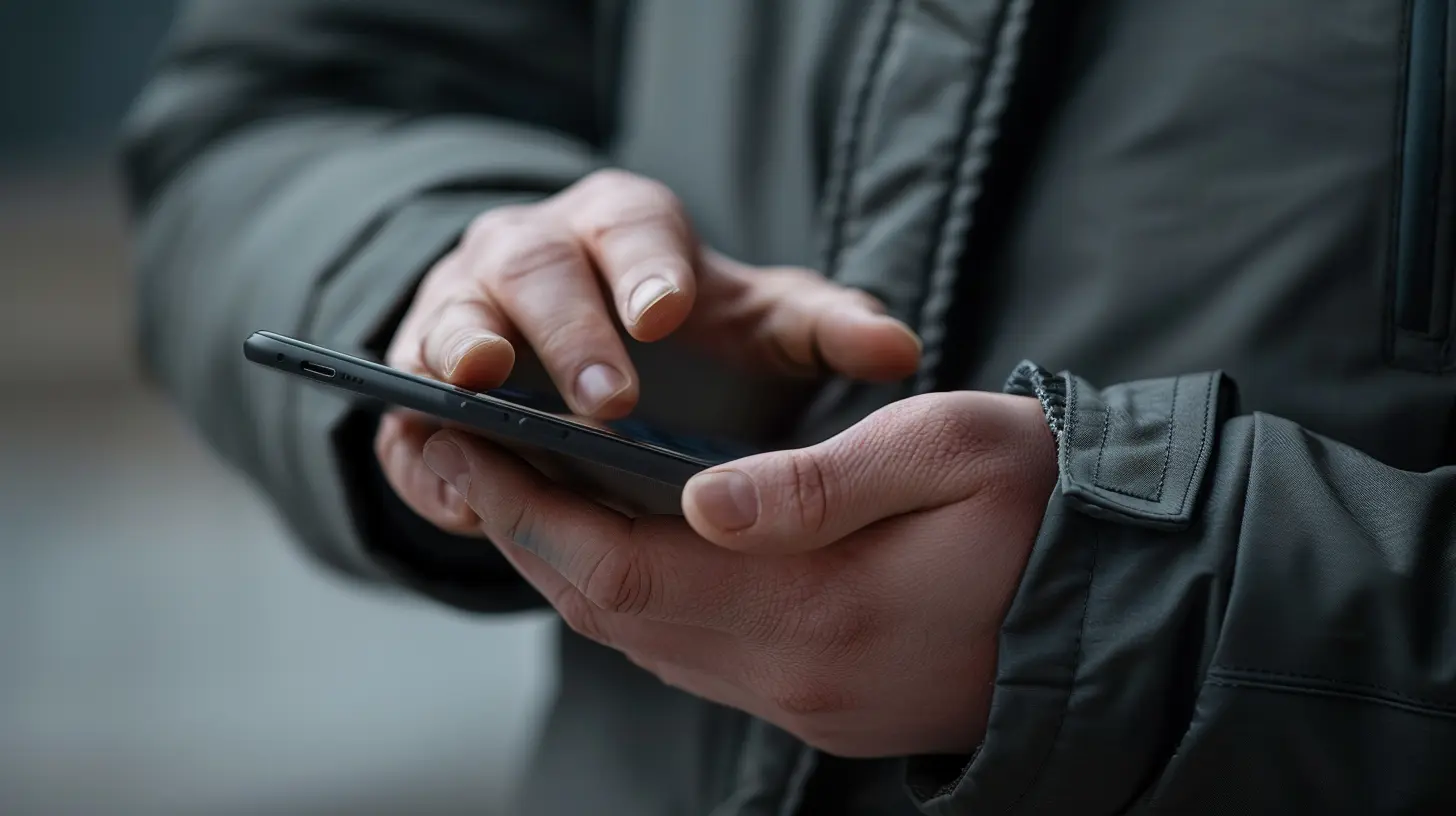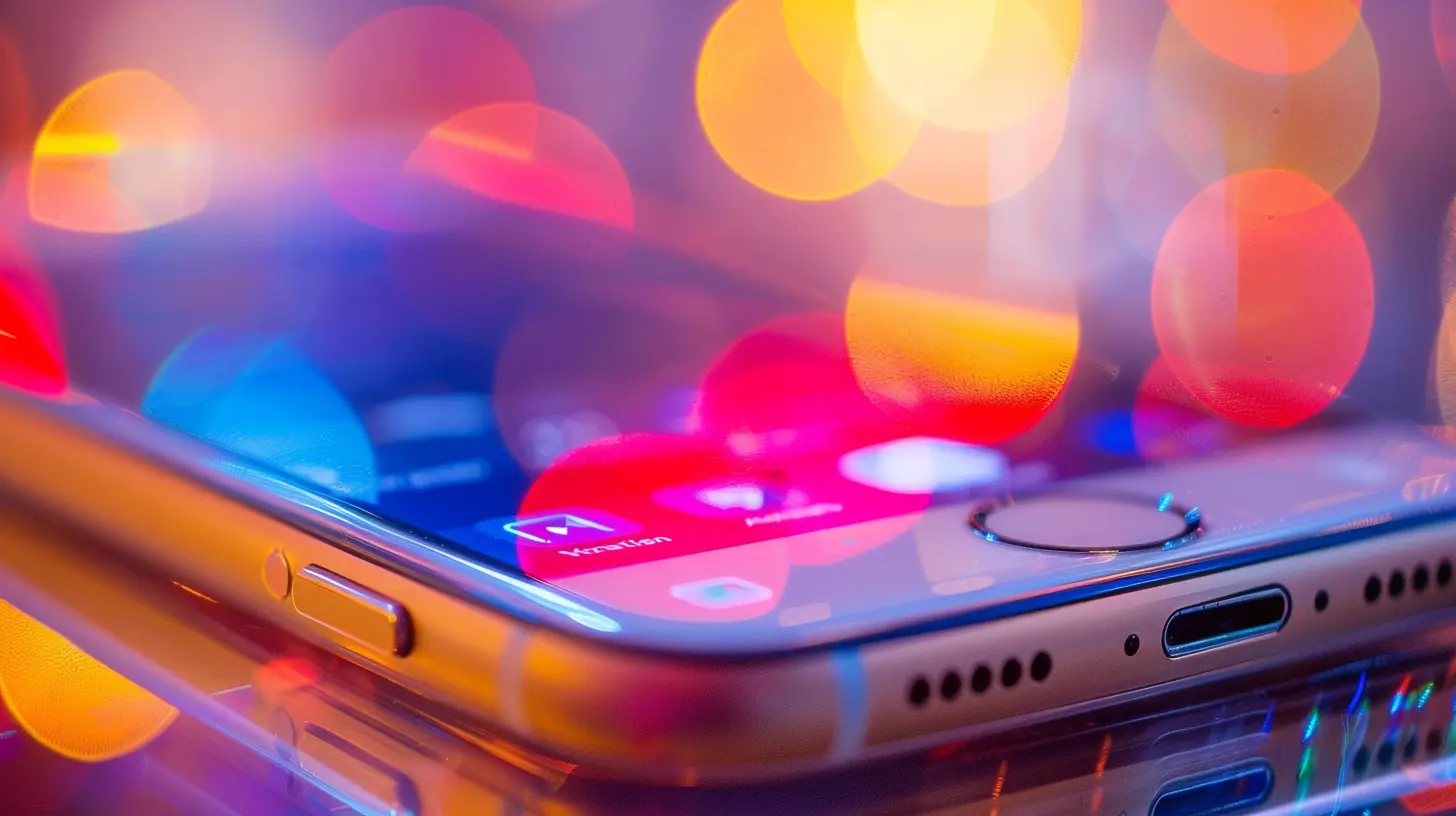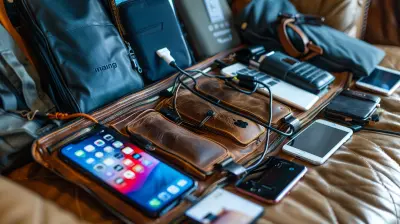Protecting Your Smartphone from Cyber Attacks: Best Practices
29 August 2025
In today's digital world, our smartphones hold everything—banking details, personal messages, photos, work emails, and even our social lives. But with all that convenience comes a serious risk: cyber attacks. If you're not careful, hackers can steal your data, track your location, or even lock you out of your own device.
So, how do you keep your smartphone safe? Buckle up, because we're about to dive into the best practices you need to follow to protect your phone from cyber threats. 
Why Are Smartphones Prime Targets for Hackers?
Think about it—smartphones are always connected to the internet, loaded with sensitive data, and often lack proper security. Hackers love easy targets, and a poorly protected smartphone is like an open treasure chest waiting to be looted.Here are some reasons why your phone is at risk:
- Weak passwords or no security locks
- Connecting to unsecured public Wi-Fi
- Downloading malicious apps
- Clicking on suspicious links
- Not updating software regularly
But don't panic—by following the right security practices, you can make your smartphone a fortress against cyber criminals. 
1. Set Strong Passwords and Enable Biometric Security
A weak password is like leaving your front door unlocked. Hackers can crack a simple password in seconds using brute force attacks.What You Should Do:
- Use a strong passcode—At least 6 digits or, even better, a mix of letters, numbers, and special characters.- Enable fingerprint or facial recognition—Biometric security adds an extra layer of protection.
- Change passwords regularly—Especially for important accounts like banking and email.
💡 Pro Tip: Avoid using common passwords like "123456" or "password." If you have trouble remembering complex passwords, use a password manager. 
2. Keep Your Operating System and Apps Updated
Updates can feel annoying, but skipping them is like ignoring a leaky roof—it only gets worse over time. Updates patch security flaws that hackers exploit, so ignoring them leaves you vulnerable.What You Should Do:
- Enable automatic updates for your operating system and apps.- Manually check for updates if auto-updates are disabled.
- Uninstall apps that are no longer maintained or updated.
🚀 Fun Fact: Many cyber attacks exploit known vulnerabilities that have already been patched by updates! 
3. Avoid Connecting to Unsecured Public Wi-Fi
Public Wi-Fi might be convenient, but it’s also a playground for hackers. Cyber criminals can intercept your data using "Man-in-the-Middle" attacks, allowing them to steal passwords, emails, and even payment details.How to Stay Safe:
- Avoid logging into sensitive accounts when on public Wi-Fi.- Use a VPN (Virtual Private Network) to encrypt your connection.
- Disable auto-connect so your phone doesn’t automatically connect to risky networks.
If you really need to use public Wi-Fi, at least avoid entering passwords or conducting financial transactions while connected.
4. Be Cautious When Downloading Apps
Not all apps are created equal. Some contain malware designed to track your activity, steal personal information, or even take control of your device.Precautions to Take:
- Only download apps from official sources, like Google Play Store or Apple App Store.- Check app permissions—Does a flashlight app really need access to your contacts?
- Read reviews and ratings before installing an app.
Remember, just because an app looks legit doesn’t mean it is. Cyber criminals are experts at creating malicious apps that seem harmless.
5. Watch Out for Phishing Scams
Have you ever received a text or email that looked official but felt a little off? Phishing scams trick users into revealing sensitive information by pretending to be from a trusted source.Red Flags to Look For:
- Unexpected emails or texts asking for passwords or personal info.- Links that look suspicious (e.g., "yourbank-login.com" instead of "yourbank.com").
- Urgent messages pressuring you to act fast—hackers play on fear to trick you into clicking links.
🐟 Phishing attacks are like baited hooks—if you bite, you could lose your personal information!
If something feels suspicious, contact the company directly instead of clicking on links in the message.
6. Enable Two-Factor Authentication (2FA)
Two-factor authentication (2FA) is like putting a double lock on your accounts. Even if a hacker steals your password, they won’t get in without the second verification step.How to Set Up 2FA:
- Enable 2FA on important accounts like email, banking, and social media.- Use authentication apps (like Google Authenticator) instead of SMS codes, which can be intercepted.
- Never share your 2FA codes with anyone.
With 2FA, even if hackers crack your password, they still need your second verification step—which they won’t have.
7. Turn Off Bluetooth and Location Services When Not in Use
Bluetooth and location services are useful, but leaving them on all the time can expose you to cyber risks. Hackers can exploit vulnerabilities in these services to track your movements or even hack your device remotely.How to Stay Safe:
- Turn off Bluetooth and GPS when you’re not using them.- Restrict location access to only necessary apps.
- Use "Ask Every Time" for location permissions instead of "Always Allow."
A little privacy goes a long way!
8. Backup Your Data Regularly
Sometimes, no matter how careful you are, cyberattacks still happen. Backing up your data ensures that even if your phone gets hacked, you won’t lose everything.Best Backup Practices:
- Use cloud storage like Google Drive, iCloud, or OneDrive.- Keep an offline backup on an external hard drive or computer.
- Set up automatic backups so you don’t have to remember to do it manually.
Backups are like safety nets—if you ever fall (or get hacked), they’ll catch you!
9. Be Cautious with Smart Assistants and Voice Commands
Smart assistants like Siri, Google Assistant, and Alexa are convenient but can be security risks. Hackers have found ways to activate them remotely or intercept voice commands.How to Stay Safe:
- Disable voice commands on the lock screen—This prevents others from accessing your phone without unlocking it.- Be mindful of sensitive voice searches—Your smart assistant stores your queries.
- Review and delete voice history regularly in settings.
Your voice is yours—don’t let hackers use it against you.
Final Thoughts: Stay One Step Ahead of Cyber Criminals
Protecting your smartphone from cyber attacks isn’t rocket science, but it does require vigilance. By setting strong passwords, avoiding suspicious apps and links, enabling 2FA, and keeping your device updated, you significantly reduce your risk of being hacked.At the end of the day, cybersecurity isn’t just about technology—it’s about habits. Stay informed, stay cautious, and always think twice before clicking, downloading, or connecting. After all, your smartphone holds your digital life—keep it safe!
all images in this post were generated using AI tools
Category:
CybersecurityAuthor:

Michael Robinson
Discussion
rate this article
1 comments
Xena Reynolds
Guard your device like treasure; vigilance is your best armor.
September 7, 2025 at 4:01 AM

Michael Robinson
Absolutely! Treat your device with care—proactive measures are key to keeping it secure.


